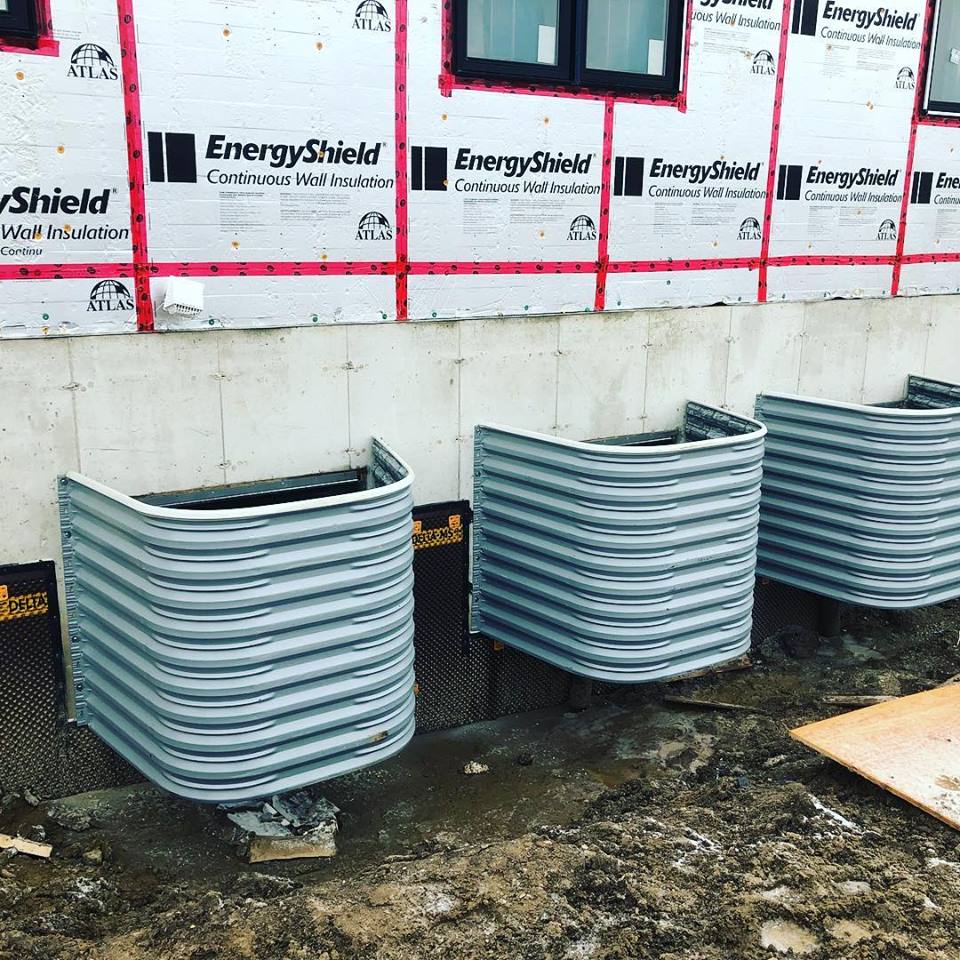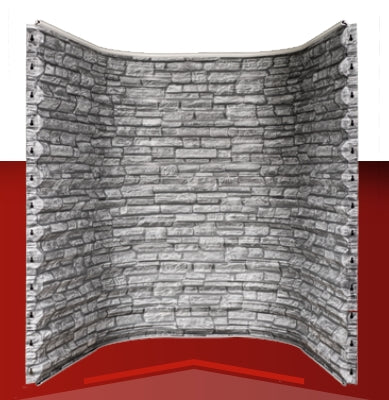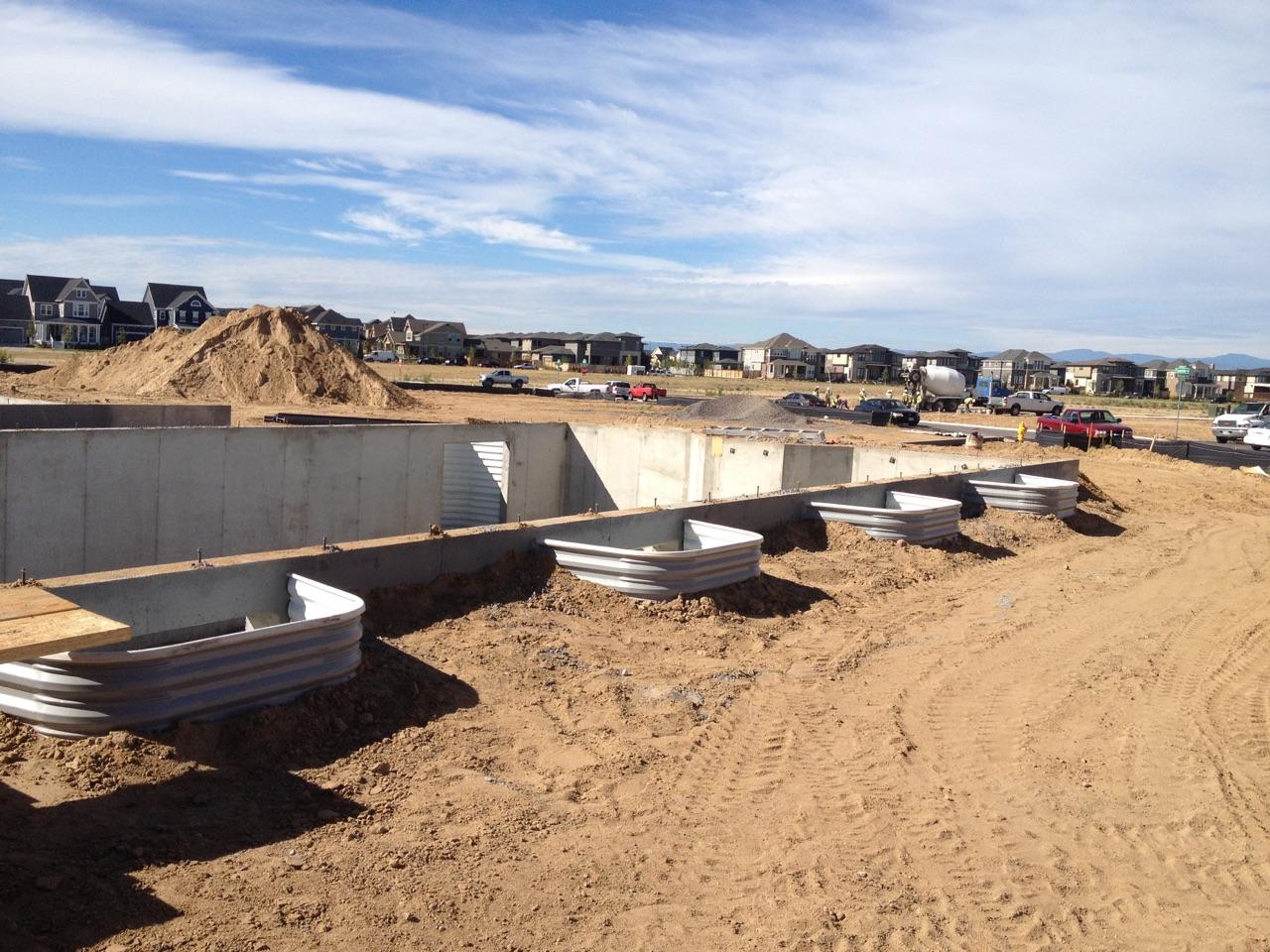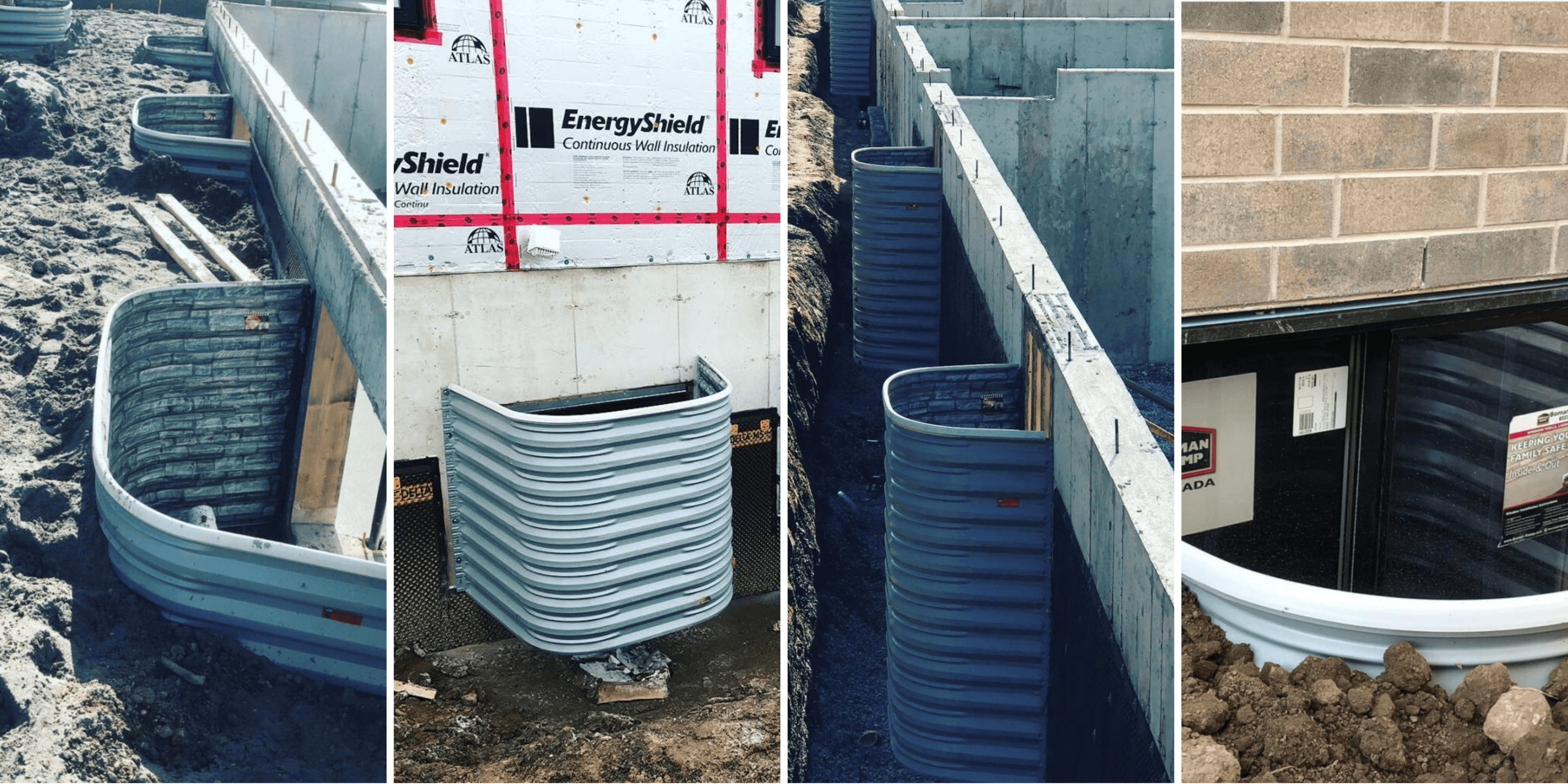WINDOWS WELLS INSTALLATIONS

Egress Window Wells
Egress window wells are necessary for most egress windows because they are located below the ground level of your home. These wells serve multiple purposes and should not be overlooked as an important part of your egress window well installation.
When window wells are installed correctly, they allow light to enter the basement, resist rust and fend off the dirt.
As part of our egress window services, our team offers a variety of egress window wells that fit your home. Our window wells are designed and built to be durable and last for many years. Together with a knowledgeable installation, they will prevent basement flooding and provide a means of escape for your loved ones in the event of a fire. Egress window wells are offered in a variety of styles and sizes that fit your project and budget.
-

Egress Window Well Regulations
An installed egress window well must be installed to meet all the regulations outlined by the Ontario building code. That means that both the window well and the cover on top of it should not prevent the escape of a person either by being too narrow or obstructing passage in some other way.
The Ontario building code outlines a number of rules relating to the construction and operation of egress window wells:
- Where an egress window opens into a window well, the clearance between the window and the well will be no smaller than 22 inches (550mm)
- Where a window sash opens into the egress opening, it will open in a way that will not reduce the size of the required opening (22 inches) in the event of an emergency
- If the window well has a cover, that cover should be openable from inside the window well without the use of any special tools or expertise
In some cases, it is also advisable to install a ladder inside the window well to allow children and the elderly to safely exit from deeper window wells.
-

Common Window Well Installation Mistakes
Installing window wells often requires digging installing proper drainage to allow for the passage of water. There are many horror stories of improper window well installation that can cause severe flooding and foundation damage. The consequences of a bad installation may not be immediately obvious but can become quickly apparent in the event of heavy rain or melting snow. Below are some mistakes you should avoid when installing an egress window well.
Improperly sized wells: Wells that are too short or too narrow will cause water and dirt to enter the well and block drainage. Window wells come in all shapes and sizes so don’t use one just because it’s available. Using the appropriate size and shape of the well can save you a lot of trouble in the long run. Be sure to measure your window properly and consult our experts before installation.
Clogged gravel: Gravel is usually placed at the bottom of the well to allow water to drain while blocking sand dirt. Over time, the gravel can become clogged and prevent water from passing through. It’s important to routinely inspect the gravel, rinse away the dirt as needed or simply replace it.
Loose window well: Over time, as the ground around your house freezes and thaws, the window well may become loose and come away from the basement wall. This allows dirt to enter the well and block drainage. A loose-fitting window well has to be dug out and reattached to the house. It is important to keep the window well in a tight fit against the wall.
Slow drainage: To inspect the quality of drainage in your window well, get a hose and run water into the well. The water should drain relatively fast and now come near the bottom of your window. If the water lingers you may have a drainage issue and should be taken care of before major rainfall causes basement flooding.
Gas lines: Starting to dig before knowing where your gas lines are can cause costly delays and serious accidents. This can be easily avoided by calling the Ontario One Call, a great resource for information about buried pipes and lines around your property.

Available Styles and Options
Egress window wells come in a variety of different sizes and styles. It can be strictly functional with rust-proof metal in WHITE or have a STACKED STONE look that will complement the exterior of your house and create a pleasant view from inside your home. Choosing the right window well depends on your needs and the type of functionality and look your project calls for.

Window well Drainage
Proper drainage is one of the most important aspects of a properly built window well. Without drainage, water will accumulate in the window well and cause it to leak through your window, regardless of how good your window seal is. Water flowing into the foundation of the house can cause a range of problems: Mold, frame rot and frequent basement flooding.
Although most homes nowadays are built with proper drainage systems, it’s important to inspect your window well for the presence of drainage (usually seen by manually removing the top layer of gravel). When our team installs a new egress window or enlarges an existing well to meet egress standards, we make sure that a drainage system is in place to allow the proper clearance of water away from the foundation. This is accomplished by sloping ground away from the well as well as the layering of gravel at the bottom of the window well.
It’s important to frequently inspect your window wells for the presence of any obstructions and foreign objects. Contamination is the most frequent cause of improper drainage. The window well creates a perfect place for the accumulation of debris, leaves and other foliage that can cause water to accumulate. This accumulation prevents water from draining and rising to the window level inside the well.

Measuring for an Egress Well
A successful window well installation starts with using the correct measurements for your window well. There are a few important guidelines to keep in mind when measuring for a window well:
- As per regulations, make sure there is at least a 24-inch clearance for the well projection from the front of the house. This clearance may have to be increased depending on how your window sash opens
- The top of the window well should be extended at least 2-4 inches above grade level
- It is recommended to install the bottom of the window well at least 8-12 inches below the bottom window sill to allow some buffer in case of water accumulation or slow drainage
- The width of the window well should be a few inches wider (2-4 inches recommended) than the width of the window to allow for it to be securely fastened to the foundation wall



